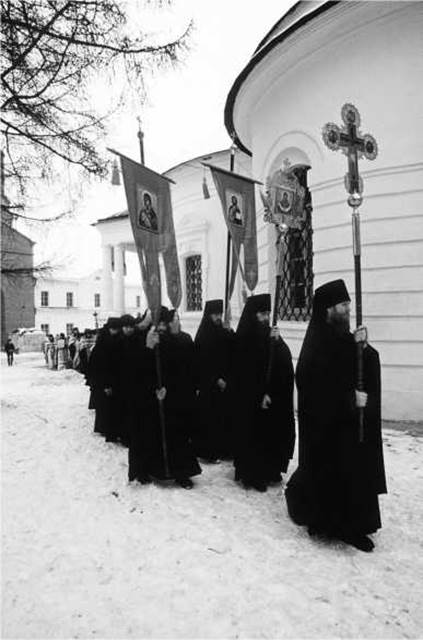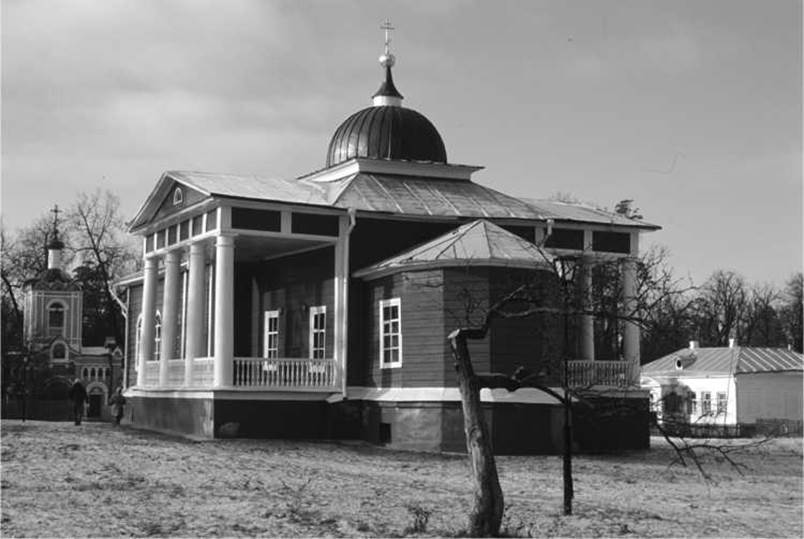Ordination
JEFFREY B. PETTIS
The Orthodox Church looks upon ordination (derived from the Latin term for registering clerics in the official lists of the church), which it designates using the biblical term as the “laying on of hands” (cheirotonia), as the sacramental continuation of the setting apart of leaders for the Christian community. Ordination is the regular transmission through the ages of the church of the charism of priesthood, as derived from the apostolic succession the church protects within itself. The Book of Numbers 27.15–23 speaks of the setting apart of Joshua by the Lord to be a leader and shepherd of the congregation. Joshua is one who is “in the Spirit” (18), and Moses places him before the priest and the congregation, lays hands on him, and gives him a charge according to divine command (22–3; cf. Deut. 34.9). In the gospels Jesus himself sets apart for ministry the twelve apostles (Mt. 10.1–5; Mk. 3.13–19; Lk. 6.12–16). He also commissions the Seventy to do the work of evangelizing (Lk. 10.1). In Acts 14.23 the Apostle Paul lays hands (cheirotonesantes) on designated church elders (presbyterous). The laying on of hands is the transmission of the sacred gift of the Spirit, confirming the gift given in Chrismation, for the special role of sanctifying, teaching, healing, and witnessing that constitutes the priestly service in the church. The Apostle Paul also refers to the bishop (episkopos) who tends the church of God like a shepherd (Acts 20.28; cf. Ignatius, Eph. 1.3; 2.1f.; 3.2; 4.1; 5.1f.). The Didache refers to the electing of bishops and deacons “who are worthy ofthe Lord, gentle men who are not fond of money, who are true (aletheis) and approved” (Didache 15). The earliest evidence for the church’s formal service of ordination is found in the Apostolic Tradition of Hippolytus (ca. 215):

Plate 44 Liturgical procession at Optina Hermitage. RIA Novosti/Topfot.

Plate 45 Optina Hermitage recently restored. RIA Novosti/Topfoto.
He who is ordained as a bishop, being chosen by all the people, must be irreproachable. When his name is announced and approved, the people will gather on the Lord’s day with the council of elders and the bishops who are present. With the assent of all, the bishops will place their hands upon him, with the council of elders standing by, quietly. Everyone will keep silent, praying in their hearts for the descent of the Spirit. After this, one of the bishops present, at the request of all, shall lay his hand upon him who is being ordained bishop, and shall pray. (Apostolic Tradition 2.1–5)
The Orthodox Church recognizes the transmission of the priesthood in three degrees, designated “major orders» These are bishop, presbyter, and deacon. The minor orders today include the subdeacon and readers (formerly there was a larger range of offices), who receive not the laying on of hands for admission into the priesthood but a lesser blessing (cheirothesia) to perform their special ministry. At an ordination a candidate is brought to the Iconostasis by fellow members of his rank (deacons by deacons, presbyters by deacons and presbyters) for “passing on” into the hands of ordained clergy of the rank to which he is being inducted. All priestly ordinations take place at the Eucharist, and only one ordination to any given rank can be celebrated at a single liturgy. The ordination of a bishop precedes the scripture reading and the Eucharistic Anaphora, in this way recognizing him as the expounder of the faith and celebrant of the mysteries. The candidate confesses his Orthodoxy and recites the creed, declares his fidelity to the canons and the ecumenical councils, vows to preserve the peace of the church and always to teach the people faithfully. Following the Trisagion chant the candidate is brought before the holy table and the book of the gospels is opened and placed upon his head. The presiding bishop offers a prayer and makes three crosses in the name of the Holy Trinity over the head of the initiate. The other bishops lay their hands upon his head while the consecratory prayers are said. Once ordained, he receives the Sakkos and other episcopal vestments. The presiding bishop places upon him the episcopal encolpion, the jeweled icon of Christ or the Mother of God which he will always wear upon his breast, the monastic mantle, the Komboskini rosary, and the pastoral staff.
The ordination of a presbyter directly follows the Eucharistic Great Entrance and thus again takes place before the Anaphora to show the presbyter’s central office as celebrant of the mysteries. During the ordination the candidate is taken from the deacons by presbyters and led around the altar three times as he kisses the four corners, and reverences the ordaining bishop. He kneels at the altar bending both knees and places his head upon the holy table as the bishop lays hands on his head, to recite the consecratory prayer. He is then invested before the people with the priest’s epitrachelion, zone (liturgical belt), and phelonion. He is also given the service book to guide his future ministry.
The ordination of deacons, whose chief service is to read the Holy Gospel and assist at the divine liturgy and the distribution of the Holy Gifts, comes after the consecration of the gifts and prior to Holy Communion, to symbolize that his is the office of assistance (not consecration). As the choir sings the deacon is led three times around the altar, the four corners of which he kisses, reverencing the bishop. Following his ordination, which takes place with a different prayer of consecration while he kneels at the altar on one knee, he receives the liturgical fan (rhipidion) as a symbol of his office.
Ordination to minor orders is performed by a bishop or monastic higumen who has received the blessing to do this, outside the sanctuary and at any communal worship service apart from the Eucharist. In the Orthodox Church all ordinations symbolically follow the consent given by the congregation and the clergy who say Axios when the candidate is presented by the bishop (“He is worthy to be ordained”). Because the nature of ordination is indelible, it can occur to the same rank only once and may never be repeated.
SEE ALSO: Anagnostes (Reader); Deacon; Deaconess; Episcopacy; Epitrachelion; Phelonion; Priesthood; Rhipidion (Fan)
REFERENCES AND SUGGESTED READINGS
Langford-James, R. (ed.) (1975) A Dictionary of the Eastern Orthodox Church. New York: Burt Franklin.
Litsas, F. (1984) A Companion to the Greek Orthodox Church. New York: Greek Orthodox Archdiocese. Parry, K. etal. (eds.) (1999) The Blackwell Dictionary of Eastern Christianity. Oxford: Blackwell.
Oriental Orthodox
PETER C. BOUTENEFF
Oriental Orthodox is the name by which several “non-Chalcedonian Churches” have come to be collectively known. This category has tended to include the Syrian Orthodox Patriarchate of Antioch and All the East, the Coptic Orthodox Patriarchate of Alexandria, the Ethiopian Orthodox Tewahedo Church, the Eritrean Orthodox Tewahedo Church, the Armenian Apostolic Church, and the Malankara Orthodox Syrian Church.
Each of these churches has traditionally rejected the authority of what the Eastern Orthodox Church considers its Fourth Ecumenical Council, held in Chalcedon in the year 451.
Plate 46 A Coptic monk in the Monastery of St. Antony, Egypt. Photo by John McGuckin.
They recognize only three ecumenical councils: Nicea (325), Constantinople (381), and Ephesus (431). Although historical and political factors cannot be ignored, neither can the role of the Tome of Pope Leo I and its theologically controversial language. The chief theological rationale for their rejection ofChalcedon rests in the council’s statement that Jesus Christ was known “in two natures.” This statement was interpreted by the non- Chalcedonians as leading inexorably to a Nestorian understanding of Christ, i.e., seeing Christ as constituted by two personal subjects (“two Sons”), one divine and one human.
The non-Chalcedonian Orthodox see Chalcedon’s “in two natures” language as a betrayal of the formula identified with St. Cyril of Alexandria: “One incarnate nature of God the Word” (mia physis tou theou logou sesarkomene), alternately rendered “One nature of the divine Word incarnate” (mia physis tou theou logou sesarkomenou). Their preference for one-nature formulations has long earned them the collective title of “Monophysites.”
Plate 47 Pope Shenouda, leader of the world’s Coptic Orthodox faithful. Photo by John McGuckin
However, since (as twentieth-century dialogues have affirmed) the non- Chalcedonians insist upon Christ’s consubstantiality (homoousion) with both God the Father according to his divinity, and with us according to his humanity, that title has increasingly been seen as misleading. Monophysitism, it is argued, best describes the radical (and bilaterally condemned) position of Eutyches the Presbyter, who rejected Christ’s consub- stantiality with humanity, and thus the non-Chalcedonians are sometimes called either “Henophysites” – the Greek Hen denoting a union rather than a radical monad – or “Miaphysites” – following the wording of the Cyrilline formula, again allowing for a union of divinity and humanity in one nature without separation, without confusion, and without change.
The title “Oriental Orthodox” arose in the context of the bilateral dialogues with the Eastern Orthodox Church, whose identity as a family or communion of autocephalous churches had been long established. The dialogues therefore played a vital role in establishing a rubric that would assemble the non-Chalcedonian churches and identify them as a coherent body. Calling these churches “Oriental” was not meant to elicit the stereotypic Orientalism of which Edward Said has written, but rather deliberately to evince a title that was essentially indistinguishable from “Eastern.” The name “Orthodox,” which did not figure previously into the self-appellations of all the churches (e.g., the Armenian Apostolic Church), was also meant to identify a parity of legitimacy and fidelity to world Orthodoxy through the ages.
These modern dialogues between the Oriental and Eastern Orthodox churches began unofficially, as a direct result of the multilateral ecumenical encounters through the World Council of Churches. Four unofficial meetings held from 1964 to 1971 were followed by a series of official dialogues constituted by church-appointed delegates from 1985 to 1993. These covered theological as well as pastoral issues, which in turn have been applied in local pastoral agreements, notably in the Middle East and in Egypt. While their theological conclusions were at points unequivocal – “both families have always loyally maintained the same authentic Orthodox Christological faith, and the unbroken continuity of the apostolic tradition” (Chambesy, 1990) – the dialogue statements have yet to be fully received or acted upon among the Eastern and Oriental churches in the wider sense.
SEE ALSO: Africa, Orthodoxy in; Armenian Christianity; Council of Chalcedon (451); Council of Constantinople I (381); Council of Ephesus (431); Council of Nicea I (325); Ecumenism, Orthodoxy and; Malankara Orthodox Syrian Church; Monophysitism (including Miaphysitism); Syrian Orthodox Churches
REFERENCES AND SUGGESTED READINGS
Gregorios, P. (ed.) (1981) Does Chalcedon Divide or Unite? Towards Convergence in Orthodox Christology. Geneva: World Council of Churches. Ware, T. (1993) The Orthodox Church. London: Penguin.
